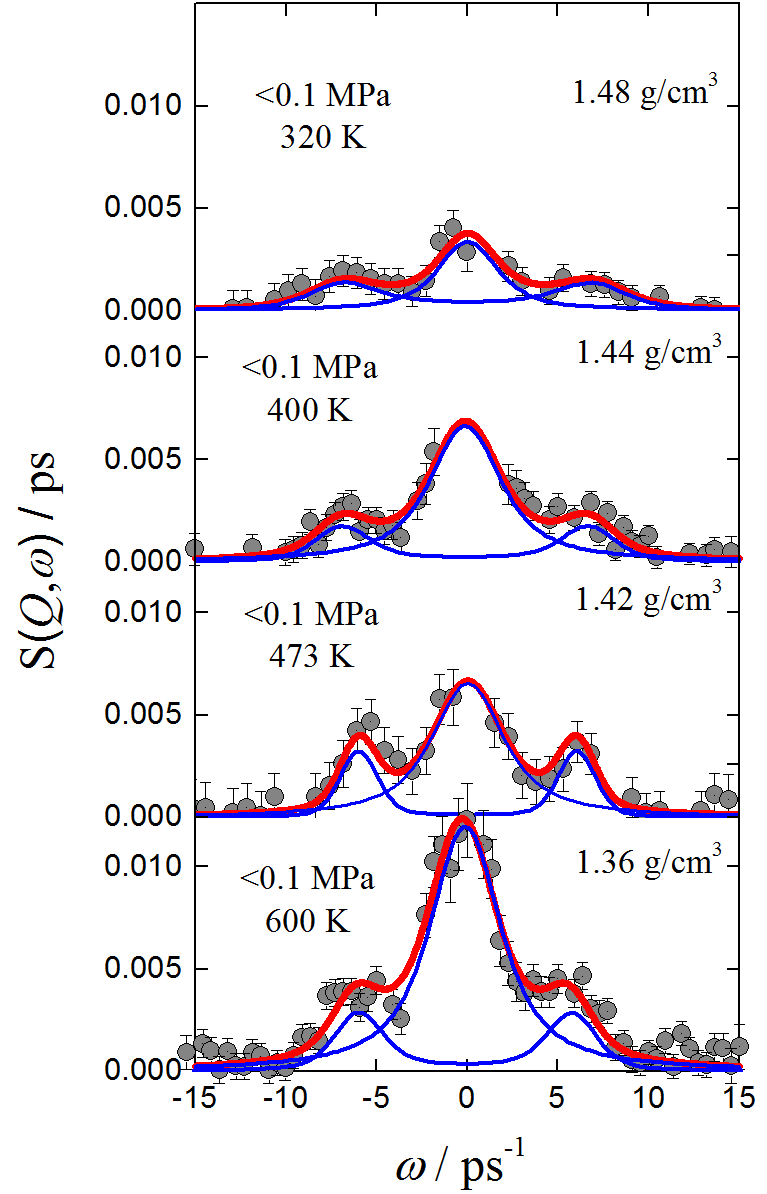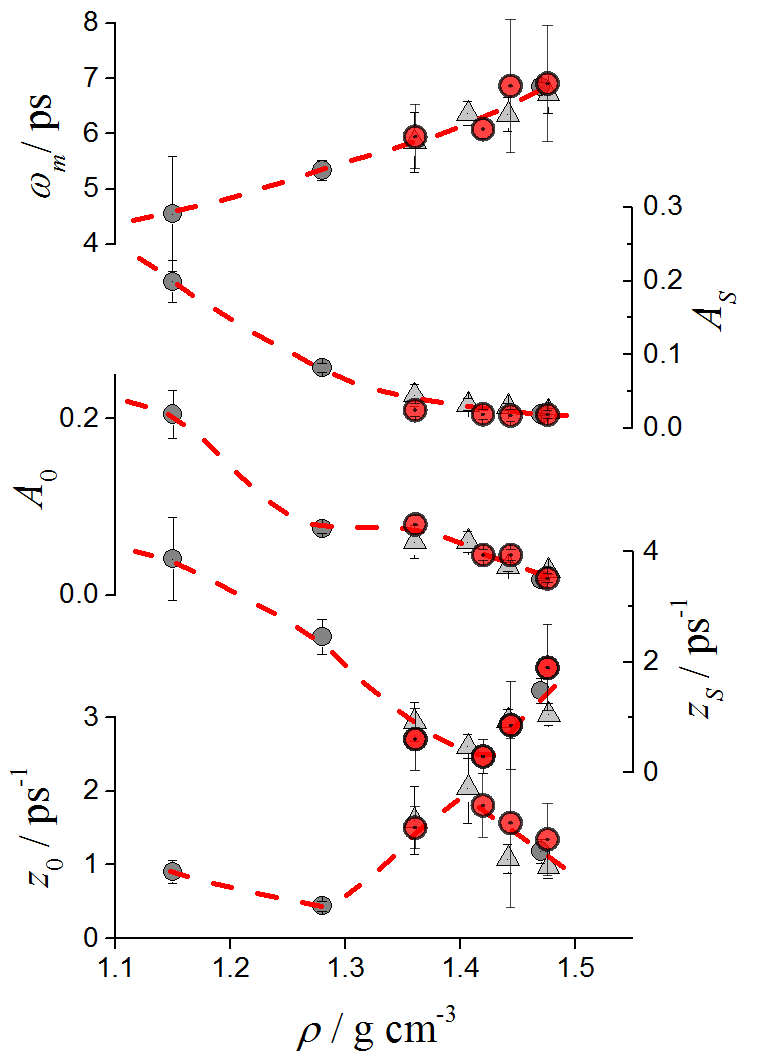Density dependence of collective modes in molten Rubidium
Density dependence of collective modes in molten Rubidium
Understanding the density dependence of collective dynamics in liquid metals is still a difficult task since the interatomic interactions are determined by the density dependence of the electron gas in these systems. In the Q→0 limit, the properties of these modes could in principle be calculated using the hydrodynamic equations, however the alkali metals are subject to strong longitudinal excitations, present still at higher momentum transfer and a theoretical approach would at least need the Q-dependence of the transport parameters in these systems. Since such data are not available, we decided to measure these modes as a function of density. Part of this work was performed on the BRISP spectrometer. Fig. 1 shows some exemplary data at 0.5 Å-1.
Temperatures and densities of the metallic melt are also given in the figure. Spectra were analyzed by fitting a Damped Harmonic Oscillator (DHO) to the spectra together with a single Lorentzian to model the central line. Red and blue lines in the figure are DHO fitting results. As a result, density dependences of collective mode parameters like excitation frequency ωm, amplitude As and width zS are obtained and are displayed in Fig. 2 by the red circles. Also shown are the corresponding central line parameters A0 and z0.
Data are in perfect accord with results obtained from triple axis spectrometry at the FRM in Munich (grey triangles) and they do also perfectly fit to data at lower density measured on IN4 (grey circles). Most striking features in the data are a distinct minimum and maximum in the zS- and z0-functions, which appear already after slight expansion of the liquid metal, from melting (ρ ≈ 1.5 g/cm3) down to densities around 1.4 g/cm3. The origin of these features is still not comprehended but might be related to an interplay between the viscosity- and the thermal conductivity functions ν(Q,ρ) and Γ(Q,ρ) which is currently further investigated.
Reference
W.C. Pilgrim, D. Szubrin, F. Demmel, A. Orecchini, S. Rols, A. Laloni, and A. De Francesco, “New perspectives onto the Metal to Nonmetal transition in expanded liquid metals”, to be submitted.


